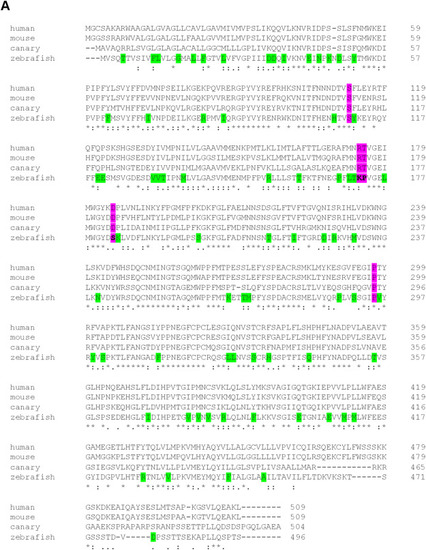Fig. 5
- ID
- ZDB-FIG-230920-13
- Publication
- Verwilligen et al., 2023 - Zebrafish as outgroup model to study evolution of scavenger receptor class B type I functions
- Other Figures
- All Figure Page
- Back to All Figure Page
|
of SCARB1 (A) Alignments of SCARB1 sequences were generated using the Clustal Omega alignment program (EMBL-EBI). Three known human SCARB1 mutation locations (rs397514572 [p.Ser112Phe], rs187831231 [p.Thr175Ala], rs387906791 [p.Pro297Ser]) as well as the Arg-174 and Asp-185 are highlighted in magenta. The amino acids that differ in only in zebrafish are highlighted in green. An asterisk (*) indicates positions which have a fully conserved residue. A colon (:) indicates conservation between sequences that have strong similar properties. A period (.) indicates conservation between sequences that have weak similar properties. (For interpretation of the references to colour in this figure legend, the reader is referred to the web version of this article.) |
Reprinted from Biochimica et biophysica acta. Molecular and cell biology of lipids, 1868(6), Verwilligen, R.A.F., Mulder, L., Araújo, P.M., Carneiro, M., Bussmann, J., Hoekstra, M., Van Eck, M., Zebrafish as outgroup model to study evolution of scavenger receptor class B type I functions, 159308, Copyright (2023) with permission from Elsevier. Full text @ BBA Molecular and Cell Biology of Lipids

